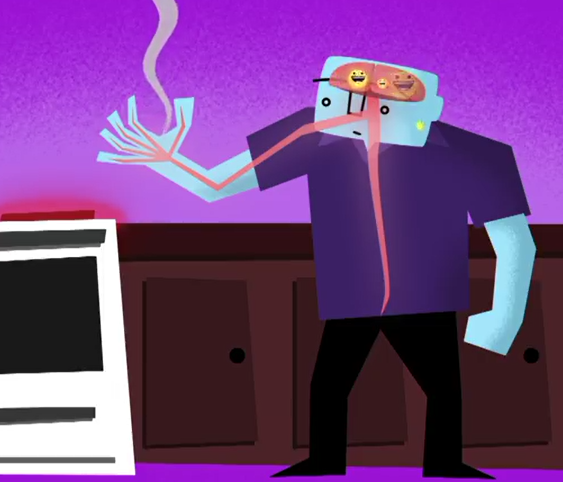But modulation networks are also activated that deliver endorphins and enkephalins, chemicals released when you're in pain or during extreme exercise, creating the runner's high.
不過調制網絡也被喚醒,去傳遞安多芬和腦啡肽,這些是你疼痛或劇烈運動時釋放的化學物質,它使運動員保持高水平。
These chemical systems help regulate and reduce pain.
這些化學系統幫助調節并減輕疼痛。
All these networks and pathways work together to create your pain experience, to prevent further tissue damage, and help you to cope with pain.
所有這些網絡和通路互相作用使你產生疼痛的體驗,減輕肌肉傷害,并幫助你處理疼痛。
This system is similar for everyone, but the sensitivity and efficacy of these brain circuits determines how much you feel and cope with pain.
每個人的系統都類似,不過大腦循環的敏感度和效率決定了你對疼痛的感受和處理疼痛的方式。
This is why some people have greater pain than others and why some develop chronic pain that does not respond to treatment, while others respond well.
這就是為什么有些人覺得比別人疼,為什么一些人有長期病痛卻并沒有因治療好轉,而其他人卻好了。

Variability in pain sensitivities is not so different than all kinds of variability in responses to other stimuli.
疼痛感受與對刺激的各種反應的差異性沒多大差別。
Like how some people love roller coasters, but other people suffer from terrible motion sickness.
比如一些人酷愛過山車,其他人就覺得那種劇烈移動很難受。
Why does it matter that there is variability in our pain brain circuits?
為什么我們疼痛腦路的差異那么重要呢?
Well, there are many treatments for pain, targeting different systems.
首先,針對不同的系統,有許多疼痛的治療手段。
For mild pain, non-prescription medications can act on cells where the pain signals start.
對于輕微的痛苦,非處方藥可以作用于導致疼痛的細胞。
Other stronger pain medicines and anesthetics work by reducing the activity in pain-sensing circuits or boosting our coping system, or endorphins.
其他更強的疼痛藥和麻醉劑可作用于減輕疼痛感知回路活動或者增強處理系統或腦內啡。
Some people can cope with pain using methods that involve distraction, relaxation, meditation, yoga, or strategies that can be taught, like cognitive behavioral therapy.
一些人可以用某些方法對付疼痛,比如轉移注意力、休息、冥想、瑜伽,或一些可以學到的策略,如認知行為治療。
For some people who suffer from severe chronic pain, that is pain that doesn't go away months after their injury should have healed, none of the regular treatments work.
對于一些遭受嚴重慢性疼痛的人,即那種在痊愈幾個月后都不會減輕的疼痛,常規治療不起作用。
Traditionally, medical science has been about testing treatments on large groups to determine what would help a majority of patients.
一般來說,藥物研究是測試大量人群的結果,以此判斷它是否能幫助大部分患者。
But this has usually left out some who didn't benefit from the treatment or experienced side effects.
不過確實有些人沒有從治療中受益或感受到副作用。
Now, new treatments that directly stimulate or block certain pain-sensing attention or modulation networks are being developed, along with ways to tailor them to individual patients, using tools like magnetic resonance imaging to map brain pathways.
現在,新的治療手段如直接刺激或阻斷特定的疼痛意識或調整網絡已經被研究出來,它針對于特定的病人,使用像磁共振成像工具來繪制腦路。
Figuring out how your brain responds to pain is the key to finding the best treatment for you.
研究大腦如何處理疼痛是找到最好治療辦法的關鍵。
That's true personalized medicine.
這才是真的私人治療。


